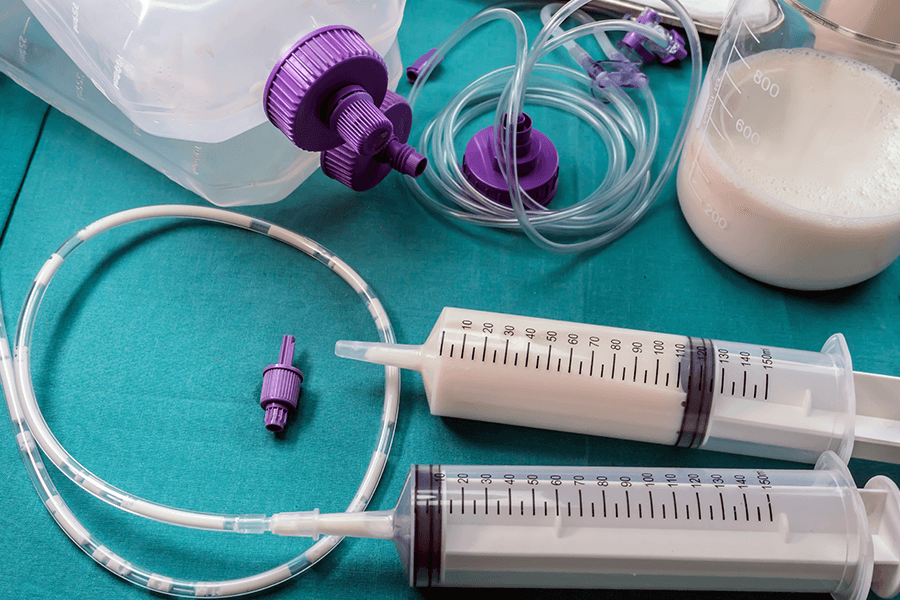Tube feeding, also known as enteral nutrition, is a vital method of delivering nutrients directly into the stomach or small intestine when a person cannot eat or swallow safely. It is commonly used for individuals recovering from surgery, illness, or those with chronic health conditions. While this method is often initiated in hospitals, more families are now opting to manage it within the comfort of their own homes. Tube Feeding at home in Dubai has become an increasingly viable option, offering patients personalized care without compromising safety or quality. But how safe is tube feeding at home? Can it be managed without medical supervision on-site? And most importantly, can it ensure the same level of care and comfort as a hospital environment?
Understanding Tube Feeding at Home
Before diving into safety concerns, it’s important to understand what tube feeding at home entails. A feeding tube may be inserted through the nose (nasogastric), directly into the stomach (gastrostomy), or into the small intestine (jejunostomy). Once a patient is stabilized and family members or caregivers are trained, the transition from hospital to home begins. This includes learning how to clean and manage the feeding tube, prepare and administer feeds, monitor for complications, and handle emergencies.
In the middle of this learning curve, safety remains a top concern. Families often worry about infections, blockages, or tube dislodgement, especially without professional support immediately available. However, with the right information, tools, and guidance, Tube Feeding at home in Dubai has proven to be a reliable and manageable option for many households.
Is Home Tube Feeding Safe?
Yes, tube feeding at home can be safe when proper protocols are followed. Studies and clinical experience have shown that with adequate caregiver education, good hygiene practices, and the use of quality feeding equipment, most people can successfully manage tube feeding at home. Here are several key safety factors to consider:
- Training and Education
- Comprehensive training is the cornerstone of safe home tube feeding. Caregivers must learn how to clean the equipment, store and prepare nutritional formulas, maintain the correct feeding schedule, and recognize early signs of complications such as infections or tube blockages. The more knowledgeable the caregiver, the lower the risk of errors.
- Hygiene and Cleanliness
- One of the biggest risks associated with tube feeding is infection, particularly at the insertion site. Keeping hands clean, sterilizing feeding syringes and tubing, and ensuring that the site is checked regularly can greatly reduce the chance of infection. Regular cleaning and inspection routines should become a habit, just like brushing teeth or cooking meals.
- Emergency Preparedness
- Knowing how to respond in emergencies is another critical safety factor. Whether it's a tube that falls out, leakage, or vomiting during feeding, caregivers should be equipped with a clear action plan. Having emergency numbers, written instructions, and backup supplies can ensure swift and effective responses.
- Monitoring Nutrition and Hydration
- Ensuring the person is getting enough calories, fluids, and nutrients is vital. Weight checks, regular medical reviews, and careful tracking of intake and output can help avoid dehydration or malnutrition. Caregivers should maintain a feeding log to monitor how well the patient is tolerating the formula.
- Using Reliable Equipment
- Safe tube feeding at home also depends on the use of good-quality equipment. Poor or incompatible materials can lead to discomfort, clogs, or even injury. Always use feeding kits recommended for home use and replace them according to manufacturer guidelines.
- Emotional and Psychological Safety
- Safety isn’t only physical—it’s also emotional. Both caregivers and patients may experience anxiety or distress about tube feeding. Building confidence through support groups, counseling, or peer advice can make the experience less isolating and more manageable. Encouraging normal routines and social interaction can help maintain a sense of normalcy and dignity.

Benefits That Enhance Safety
When done correctly, tube feeding at home has several safety advantages over hospital-based care. First, being in a familiar environment reduces stress and exposure to hospital-acquired infections. Second, the patient enjoys greater comfort and emotional support, which often translates to better overall outcomes. Third, caregivers tend to be more attuned to subtle changes in the patient’s condition because of continuous, personal involvement.
Common Myths Debunked
Some people assume that tube feeding at home is only a last resort or inherently dangerous. In reality, it has become a widely accepted part of long-term care, especially in cities with advanced home healthcare infrastructure. With modern equipment and reliable training options, home tube feeding is not just feasible—it can be a safe and empowering choice.
Final Thoughts
Ultimately, the safety of tube feeding at home depends on preparation, vigilance, and support. It is not without challenges, but with consistency and the right knowledge, families can successfully manage it and maintain quality of life for their loved ones. Especially in areas where healthcare services are evolving to support in-home medical needs, like Tube Feeding at home Dubai, more families are finding peace of mind knowing that effective care doesn't have to mean hospital walls.
In conclusion, while tube feeding at home requires effort, responsibility, and education, it can be as safe and efficient as hospital-based care. With a strong foundation of hygiene, equipment management, and emotional support, this form of care offers a viable and reassuring path forward for many individuals and families.





Comments